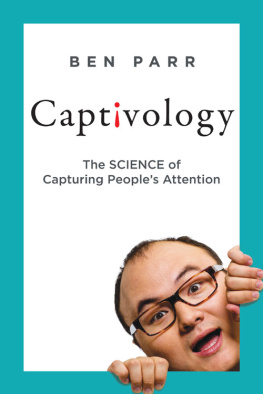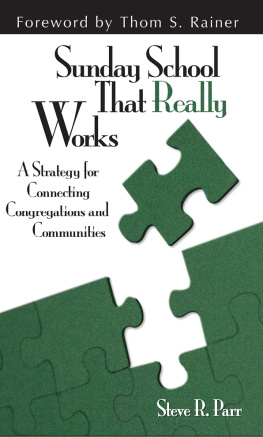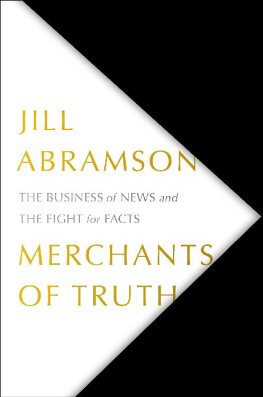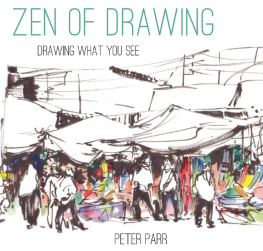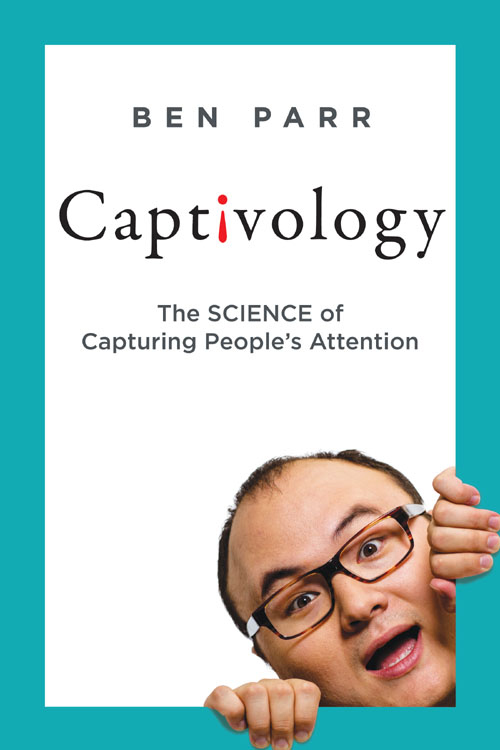To Kurt Garvin and Matt Ryd
Contents
Introduction:
A Bonfire of Attention

D ug is the naive and adorable talking dog from Pixars Up. While Dug has many admirable qualitiesloyalty, unconditional love, and joyfulness chief among themperhaps my favorite thing about him is his phenomenally short attention span.
Dug: My name is Dug. I have just met you, and I love you. [He jumps on Carl.]
Carl: Wha...
Dug: My master made me this collar. He is a good and smart master and he made me this collar so that I may talk. SQUIRREL! [He looks to distance for a few seconds.]
Dug: My master is good and smart.
We are all Dugs. Fifteen hundred years ago, we had the patience to sit in the Baths of Diocletian and discuss the finer points of Roman politics and philosophy. Today, we cant go through dinner without somebody pulling out his or her phone and checking Twitter.
Im no exception. Like the squirrel-loving Dug, I succumb to distractions all the time. As a product of the texting and Facebook generation, I found it impossible to avoid Reddit, Gmail, and Netflix while I was writing this book. I have no fewer than fifteen windows and twenty-five tabs open on two monitors at any time. I track tech, entertainment, media, and science news across six Twitter accounts in a desktop app called TweetDeck. It whizzes by with a constant stream of updates like a traders Bloomberg Terminal.
In exchange for nearly instantaneous access to massive amounts of information, Ive had to give up a little bit of my attention span. All of us have made this trade-off. We have all acquired new habits and coping mechanismse-mail management tools, calendar software, and constant multitaskingto manage the massive amount of information thats coming at us every day. According to researchers at the University of Southern California, the average person in 1986 was exposed to approximately forty newspapers worth of information daily. In 2006, that number had more than quadrupled to 174 newspapers worth of information daily. Imagine somebody dropping off 174 newspapers at your doorstep every single day.
Part of the reason for this rise in consumption is due to how easy it is today to create content. In 1986, there were no blog posts, status updates, YouTube channels, or Instagrams. If you wanted people to read your opinion piece, you had to send a letter to the editor of your local newspaper. If you wanted to share a photo with your friends, you had to take the film to the camera store, get it developed, print multiple copies, and physically hand the photos to your friends. Today, the only thing you need to share any content is a keyboard or a touch screen.
Our attention just cant keep up with all this information. The more data available to us, the more our attention has to be divided to consume it. As a result, attention has become a scarce resource. We have the same 1,440 minutes per day our ancestors had but far more information and distractions to fill that time. There are clear limits to how much and how long humans can pay attention. The combination of increased information and our brains limits has changed our habitsand not necessarily for the better. Many of us have turned to multitasking as a way to keep up.
Its even worse if you are a multitasker. You might think a chronic multitasker would be more adept at switching between tasks, but you would be wrong. A recent study by Stanford professor Eyal Ophir found that heavy media multitaskersthose who consumed a large amount of media contentwere not only more susceptible to irrelevant stimuli, but they were also significantly slower when it came to switching between tasks.
So not only is attention more scarce, but our habits are also making us less efficient at focusing our attention. This isnt good news if youre a startup trying to capture the undivided attention of a user, or a local official trying to rally support for a new library or a much-needed renovation of your citys infrastructure. If you want to capture attention for your ideas, your work, or your product, you will not only have to compete against countless people and companies who are vying for the same attention you are, but youll also need to fight against the very unproductive habits that we have all developed to manage our attention in the midst of overwhelming stimuli. Attention is scarce and fleeting. You better figure out how it works, what people naturally pay attention to, and why.
And yet, despite the fact that all around us is a fierce competition for attention, there are people who still dont believe they need to put in the effort to break through the noise to get their ideas noticed.
Over the past few years, Ive heard way too many people misuse the famous quote from the 1989 film Field of Dreams, declaring, If you build it, he will come. This misappropriated quote suggests that if you simply put your head down and develop a great idea or build a fantastic product, people will eventually recognize it and come to you. It also implies that reaching out to people with your idea or project is not only unnecessary, but also beneath you.
It is the most annoying misuse of a quote ever. I despise when people use this quote this way not only because its wrong but also because it leads people to believe that attention isnt something you should actively court. This build it, they will come mind-set is behind the reason some of historys greatest minds went unrecognized for decades or, worse yet, their work still has never seen the light of day.
Vincent van Gogh, one of the greatest painters of his time, sold just one work of art while he was alive. Alfred Wegener, the man who discovered that continents drift ever so slowly on the surface of the Earth, was ridiculed and ignored until two decades after his death. Fortunately, these masters were eventually discovered. But we can only imagine the van Goghs and Wegeners that have slipped through the cracks because they couldnt capture the attention of others.
Then and now, attention has always mattered. Nowadays, if you are a teacher, you have to find novel ways to keep your easily distracted students engaged in your lessons. If you are a marketer, you have to find ways to promote your brands. If you run a charity, you need your cause to be in the forefront of a donors mind. If you are a scientist, you need to get the attention of those who allocate research grants. If you are an actor, you need to maintain the attention of agents, casting directors, and audiences. If youre a musician, you need your music to stay on peoples minds so theyll buy it and tell their friends.
Do you want people to recognize your art? Do you want people to use your product? Do you want others to read or watch your content? Do you want to run for office someday? Do you want to have your research recognized and shared? Do you want to make more people aware of your favorite charity and its cause? Do you want your crush to turn his or her attention toward you? Do you want your students to stop looking at their phones and focus on what youre teaching them?
If you answered yes to any of these questions, then this book is for you.
Why I Wrote This Book
I wrote Captivology out of necessity. In my worldthe world of technology and startupsattention often means the difference between success and failure. Startups need to catch the attention of busy investors. They need to secure the attention of the press to spread the word about their products. They need to captivate their users long enough to entice them to come back. Startups need to grab the attention of potential hires and keep them engaged once they join their team. Without attention, even a great startup with a compelling product will die. Attention is the fuel that drives great companies, causes, and ideas.

